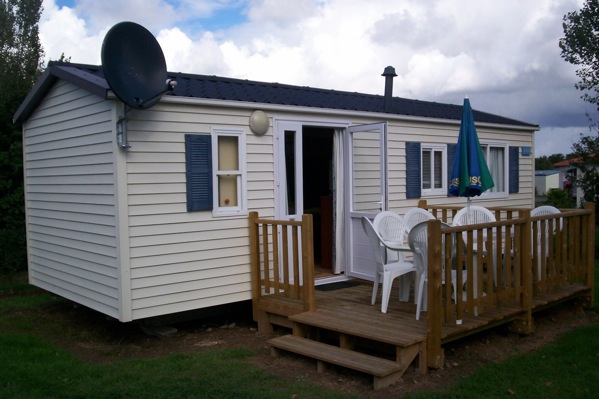-
Modular vs Manufactured Homes
While the terms “modular home” and “manufactured home” refer to two very different things, they are sometimes used interchangeably. Perhaps some of this confusion stems from the fact that modular homes are, in fact, manufactured (“manufactured” might be an unfortunate label.) Also, traditional “site-built” homes are not necessarily better than modular homes, despite the stigma associated with their assembly-line origin. There have been cases where Realtors and builders of manufactured homes have misrepresented manufactured homes as modular homes, and buyers were not informed enough to know the difference. Everyone (especially inspectors, who make their living examining residences) should understand the distinguishing features of these two types of houses.
Modular Homes
Modular homes are residences constructed entirely in factories and transported to their sites on flatbed trucks. They are built under controlled conditions, and must meet strict quality-control requirements before they are delivered. They arrive as block segments and are neatly assembled, using cranes, into homes that are almost indistinguishable from comparable ones built on-site. Wind and rain do not cause construction delays or warp building materials. In addition, modular homes:
- must conform to the same local, state and regional building codes as homes built on-site;
- are treated the same by banks as homes built on-site. They are easily refinanced, for example;
- follow the same market trends as site-built houses;
- must be structurally approved by inspectors;
- can be of any size, although the block sections from which they are assembled are uniformly sized;
- are often more basic than homes built on-site, but they tend to be sturdier;
- are highly customizable. Design is usually decided by the buyer before construction has begun; and
- generally take eight to 14 weeks to construct. Differing from a site-built home, the foundation can be dug at the same time that the house is being constructed.
Proponents of modular homes claim that their indoor, environmentally controlled construction affords them greater strength and resilience than homes built on-site. They also tend to be constructed using more precise building techniques and with more building material than comparable site-built residences. One reason for this is that they must be able to withstand the stress of highway transport. A study by FEMA found that modular homes withstood the wind and water from Hurricane Andrew better than most other homes in the area. They take less time to construct than site-built homes, are more energy-efficient, and generally cost less.
Manufactured Homes
The term “manufactured home” is the most recent label for what were once called “mobile homes” or “trailers.” They are relatively inexpensive, small, and are held to less stringent standards than modular and site-built homes. Their obvious advantages are their mobility and affordability, factors that allow buyers to make home purchases without a serious monetary or geographical commitment. They are available in three sizes that escalate as follows: “single-wide,” “double-wide” and “triple-wide.” In addition, manufactured homes:
- conform only to Housing and Urban Development (HUD) code. Some homes contain a red tag that confirms that the unit was manufactured in compliance with this code;
- are inspected, but do not have to be structurally approved by an inspector;
- are manufactured in sections at factories;
- are never more than one story;
- do not have a permanent or conventional foundation;
- tend to lose value over time because they are difficult to expand or improve;
- are transported to the site on their own wheels;
- are transported on steel chassis that are never removed;
- are often placed on property owned by others, such as public land that is leased by the homeowner;
- are treated as a separate lending category from modular and on-site built homes; and
- are rarely custom-designed. The buyer can choose from homes that have already been built and receive it within days.
Despite their manufacturing process, modular homes are essentially the same as homes that are built on-site. They are treated the same under the law, and their basic structural features are almost indistinguishable from site-built homes, once assembled. Manufactured homes are relatively small, inexpensive, mobile residences that require a smaller commitment than is required by modular and site-built homes. It is important to understand the differences between these home types in order to reduce the influence of stigmas, misrepresentation and ignorance.
Aticle written by:
by Nick Gromicko, CMI® and Kenton Shepard
Take InterNACHi's free, online How to Inspect Manufactured and Mobile Homes course now.



